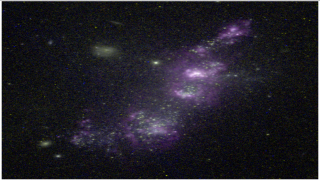Bibcode
DOI
Sánchez Almeida, J.; Viticchié, B.; Landi Degl'Innocenti, E.; Berrilli, F.
Bibliographical reference
The Astrophysical Journal, Volume 675, Issue 1, pp. 906-919.
Advertised on:
3
2008
Journal
Citations
16
Refereed citations
10
Description
The Zeeman pattern of Mn I lines is sensitive to hyperfine structure
(HFS), and because of this, they respond to hectogauss magnetic field
strengths differently than the lines commonly used in solar
magnetometry. This peculiarity has been employed to measure magnetic
field strengths in quiet-Sun regions, assuming the magnetic field to be
constant over a resolution element. This assumption is clearly
insufficient, biasing the measurements. The diagnostic potential of Mn I
lines can be fully exploited only after one understands the sense and
magnitude of such bias. We present the first syntheses of Mn I lines in
realistic quiet-Sun model atmospheres. The Mn I lines weaken with
increasing field strength. In particular, kilogauss magnetic
concentrations produce Mn I λ5538 circular polarization signals
(Stokes V) that can be up to 2 orders of magnitude smaller than what the
weak magnetic field approximation predicts. The polarization emerging
from an atmosphere having weak and strong fields is biased toward the
weak fields, and HFS features characteristic of weak fields show up even
when the magnetic flux and energy are dominated by kilogauss fields. For
the HFS feature of Mn I λ5538 to disappear, the filling factor of
kilogauss fields has to be larger than the filling factor of
subkilogauss fields. Since the Mn I lines are usually weak, Stokes V
depends on magnetic field inclination according to the simple cosine
law. Atmospheres with unresolved velocities produce very asymmetric line
profiles, which cannot be reproduced by simple one-component model
atmospheres. Using the HFS constants available in the literature, we
reproduce the observed line profiles of nine lines with varied HFS
patterns.
Related projects

Starbursts in Galaxies GEFE
Starsbursts play a key role in the cosmic evolution of galaxies, and thus in the star formation (SF) history of the universe, the production of metals, and the feedback coupling galaxies with the cosmic web. Extreme SF conditions prevail early on during the formation of the first stars and galaxies, therefore, the starburst phenomenon constitutes a
Casiana
Muñoz Tuñón